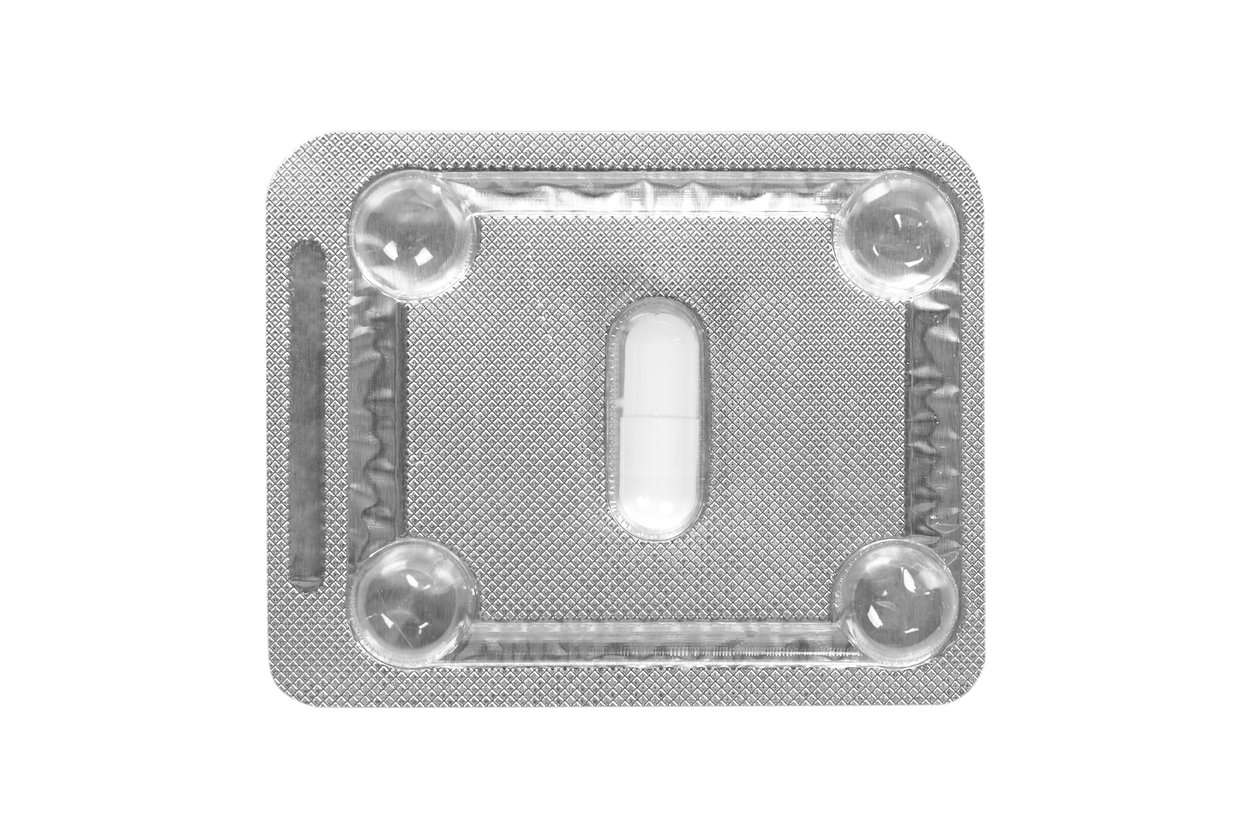Share this
Troubleshooting Blister Packaging Print Problems
by Luminite on Apr 6, 2022 8:40:00 AM

Flexographic printing can achieve high resolution printing results on blister packaging, but care must be taken not to harm the integrity of the seal so the contents are not compromised by outside elements.
If you're experiencing issues with flexo printing on blister packaging, consider the following troubleshooting tips.
Top 4 Culprits: Troubleshooting Problems with Flexo Printing on Blister Packaging
Here are a few of the likely suspects causing defects with blister packaging.
- Ink
- Image carrier
- Ink PH
- Viscosity
Each element has individual considerations for how they can cause a defect during the print process.
1. INK:
Inks used for printing on blister packaging need to be compatible with the backing material, and should also be free of ingredients that might compromise the adhesion process.
They may need to be heat-tolerant, depending on the adhesive being used. In addition, using contaminated ink can result in hickeys or foreign particles on your finished product.
2. IMAGE CARRIER:
Check the image carrier before every print run, and always maintain them properly.
Dirty, soft, worn, or loose sleeves, cylinders, or plates can lead to dirty prints, uneven ink transfer, spotty printing, streaking, washboard effects, and image bleeding.
3. INK PH:
If the image carriers are in good shape, and you are still having problems, the culprit could be the ink's pH.
The backing could be cardboard, foil, or plastic. Different materials may require inks with pH levels that dry slower or faster, so they stick to the substrate.
4. VISCOSITY:
If your viscosity is too low, your blister packaging print runs might have trouble with foaming, abrasion, spotty ink deposits, or uneven appearance.
Too high and you might experience smeared ink, uneven color, darker colors than expected, halos, and fisheyes.
Want to learn more about common flexo printing defects and possible solutions to them? Download our free ebook below:
How to Improve Common Blister Packaging Printing Problems
Challenges in blister packaging can include adhesive build-up, thermal expansion, clean-up problems, and other mishaps.
Tips on how to improve the process include:
- Press maintenance: Always maintain presses properly, monitor printing pressure, and reduce wobbling.
- Pressure: Perform a “kiss” impression and adjust the pressure accordingly.
- Gears: Check the condition, lubrication and cleaning of gears regularly.
- Contamination: Keep image carriers in top condition and look for dried ink on the anilox.
- Ink: Use the ink that is right for the plastic, backing and adhesive.
- Image carrier: Avoid using harsh solvents or cleaning agents.
- Distribution: Regardless of whether the image carrier is a sleeve, cylinder or plate, silicone elastomer is likely the best material option when using adhesives.
- Anilox: Choose an anilox with cells that hold and support ink transfer at the appropriate rate.
- Drying: Don’t get so caught up in productivity that you fail to allow proper drying time.
Flexo Problem Still Not Solved?
Flexo printing on blister packaging requires a delicate balance of several components. For a print run to turn out exactly as expected, all components have to be exactly right.
For more information about troubleshooting your blister packaging printing problems, contact a flexographic printing expert at Luminite.
(Editors Note: This blog was originally published in October 2019 and was updated in April 2022 to reflect current information)
Share this
- Flexographic Printing (81)
- Image Carrier (28)
- Elastomer sleeves (27)
- Ink Transfer (25)
- Quality (22)
- Flexo sleeve (20)
- News (18)
- printing defects (18)
- flexo printing defects (17)
- sustainability (13)
- Flexo Troubleshooting (12)
- Ink (12)
- Digital Printing (10)
- Flexo 101 (10)
- Flexo Inks, (9)
- Anilox (7)
- Blister Packaging (7)
- Cost (6)
- print misregistration (6)
- regulations (6)
- Corrugated Printing (4)
- pinholing (4)
- "Tradeshow (3)
- Digital Flexo (3)
- Gravure Printing (3)
- Insider (3)
- Load-N-Lok (3)
- Wide Web (3)
- direct laser engraving (3)
- flexo-equipment-accessories (3)
- gear marks (3)
- halo (3)
- testing (3)
- Narrow Web (2)
- bridging (2)
- feathering (2)
- filling in (2)
- mottled image (2)
- pressure (2)
- Labelexpo (1)
- dirty prints (1)
- doughnuts (1)
- embossing (1)
- kiss impression (1)
- October 2023 (2)
- September 2023 (1)
- August 2023 (1)
- July 2023 (3)
- June 2023 (1)
- May 2023 (5)
- April 2023 (1)
- March 2023 (2)
- February 2023 (1)
- January 2023 (3)
- December 2022 (1)
- October 2022 (3)
- September 2022 (2)
- August 2022 (2)
- July 2022 (3)
- May 2022 (1)
- April 2022 (4)
- March 2022 (2)
- February 2022 (5)
- January 2022 (7)
- December 2021 (1)
- November 2021 (3)
- October 2021 (2)
- September 2021 (1)
- August 2021 (1)
- July 2021 (3)
- June 2021 (1)
- May 2021 (4)
- April 2021 (4)
- March 2021 (4)
- February 2021 (2)
- December 2020 (1)
- November 2020 (1)
- October 2020 (2)
- September 2020 (1)
- August 2020 (3)
- July 2020 (2)
- June 2020 (3)
- May 2020 (1)
- April 2020 (1)
- November 2019 (3)
- October 2019 (1)
- August 2019 (1)
- July 2019 (1)
- April 2019 (1)
- March 2019 (1)
- January 2019 (1)
- October 2018 (2)
- August 2018 (1)
- July 2018 (1)
- June 2018 (1)
- February 2018 (2)
- October 2017 (1)
- September 2017 (2)
- January 2016 (1)
- February 2015 (1)
- January 2015 (1)
- December 2014 (2)
- September 2014 (1)
- February 2014 (1)
- January 2014 (1)
- December 2013 (3)
- October 2013 (1)
- September 2013 (1)
- June 2013 (1)
- January 2013 (1)


Comments (3)